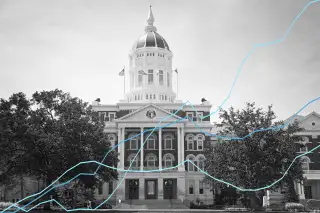The Real Price of Public Colleges May Fall This Year for the First Time in a Decade

For the first time in a decade, the real cost of a four-year public college may actually be decreasing.
Sticker prices at public colleges and universities this fall increased at a rate slower than inflation, according to two annual reports on college pricing and financial aid released today by the College Board. Private colleges, while above inflation, also posted modest year-over-year increases in published tuition and fees.
It's too soon to say for certain whether that slow growth will lower the net price—the amount families actually pay after discounting and grant aid is taken off the sticker price—but signs are promising. If financial aid levels for the 2018-19 academic year remain the same as last year, average net prices at public colleges will dip slightly to $14,880, according to the report.
One year of encouraging news doesn't turn the tide on overall college affordability: In 23 of the past 25 years, annual increases in published tuition and fees at four-year colleges were higher than the rate of inflation. In that same time period, published tuition and fees rose at a pace that dwarfed any gains in median family income.
The result? Tuition bills continue to take up an increasing portion of families’ incomes. As the chart above shows, while the average price families pay at public and private four-year colleges has increased 70% and nearly 40%, respectively, in the past 25 years, inflation-adjusted median family income has grown just 22%.
The average net price for a year at a public university is now equal to 20% of the median family income, compared to 14% in 1993. At private colleges, the share has grown to 36%, up from 31%.
One reason for the positive signs in public college costs is that state funding has increased in recent years as budgets recover from the Great Recession. Private colleges, meanwhile, have worked hard to keep financial aid increases in step with tuition increases to keep their net prices somewhat competitive with publics.
"A lot of states are trying very hard to keep tuition increases low, especially in the past couple years," says Jennifer Ma, an economist at the College Board and coauthor of the report. Many states have kept tuition basically flat, she added.